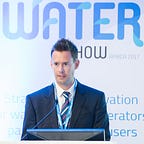Exploring Water-Energy Nexus: Future Challenges and Innovative Solution
Understanding the intricate relationship between water and energy is crucial. These two resources are interconnected: water produces nearly all types of energy, and energy is the dominant cost factor in providing water and wastewater services. This relationship is expected to become more intertwined due to increasing demands and limitations on both resources, driven by economic growth, population increase, and climate change.
Energy Usage in the Water Sector
Energy usage in the water sector is predicted to double over the next 25 years, mainly due to desalination projects. By 2040, these projects are expected to constitute 20% of the electricity demand related to water. The growing energy needs of the water sector are also influenced by large-scale water transfer projects, an increasing demand for wastewater treatment, and the need for higher treatment levels.
Regional Disparities in the Water Sector’s Electricity Consumption
The water sector’s contribution to global electricity consumption will remain around 4% by 2040. However, this figure masks significant regional disparities. In the United States and the European Union, the water sector accounts for approximately 3% of total electricity consumption. Conversely, in the Middle East, the sector’s share is expected to rise from 9% in 2015 to 16% by 2040, primarily due to increased desalination capacity.
Projected Increase in Energy-Related Water Consumption
The energy sector is projected to consume significantly more water in the coming decades, with energy-related water consumption expected to rise by nearly 60% between 2014 and 2040. Certain technologies, such as wind and solar PV, require minimal water. However, others demand more water, including biofuel production, concentrating solar power, carbon capture and storage, and nuclear power. Therefore, transitioning to a lower carbon pathway could intensify water stress or be constrained by it if not properly managed.
Water Availability Challenges in Emerging Economies
Water availability is poised to become a critical issue for emerging economies. This is particularly true for countries like China and India, where water demand from various sectors is rising. Both nations depend on nuclear and coal-fired power plants, many of which are in areas experiencing water stress.
Innovative Solutions: Singapore’s Floating Solar Farms
Innovative solutions are being implemented globally to reduce pressures on the water-energy nexus. For instance, Singapore’s Public Utilities Board (PUB) launched a 60-megawatt peak floating solar photovoltaic (PV) system on Tengeh Reservoir in July 2021. This is one of the world’s largest inland floating solar farms, with over 122,000 solar panels. Singapore plans to establish two more floating solar farms and continues to install solar PV systems on its water infrastructure roofs. The clean energy generated will power PUB’s local water treatment plants and the Marina Barrage, offsetting about 7% of PUB’s annual energy needs.
Innovative Solutions: San Antonio Water System’s Biogas Energy
Similarly, the San Antonio Water System (SAWS) uses methane from wastewater treatment as renewable energy. This biogas, which is 60% methane and a by-product of the anaerobic digestion of biosolids, is produced by SAWS annually at approximately 140,000 tons. Partnering with Ameresco Inc., a renewable energy company since 2010, they’ve processed over 1.5 million standard cubic feet of biogas daily. Ameresco delivers at least 900,000 cubic feet of natural gas daily to a commercial pipeline for sale. SAWS earns around $200,000 annually from biogas sales, reducing operational costs and carbon dioxide emissions by 19,739 tons yearly.
Conclusion
The interdependence of water and energy is a critical aspect of sustainable development. As demands for both resources escalate due to population growth and climate change, innovative solutions like Singapore’s floating solar farms and San Antonio’s biogas energy project are essential. These initiatives demonstrate the potential for integrating energy and water management to enhance efficiency, reduce environmental impacts, and address the water-energy nexus challenges.
*Robert C. Brears is the founder of Our Future Water, which has knowledge partnerships with various organizations, including the OECD/World Bank/UNEP’s Green Growth Knowledge Platform and the World Bank’s Connect4Climate initiative. Robert is the Editor in Chief of Mark and Focus. He is the author of 14 books, including Financing Water Security and Green Growth (Oxford University Press) and The Green Economy and the Water-Energy-Food Nexus(Palgrave Macmillan), and the Editor in Chief of The Palgrave Handbook of Climate Resilient Societies. Robert is on the roster of experts (water) for the UN’s Green Climate Fund.
